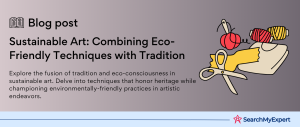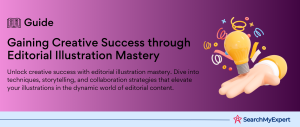Understanding Artistic Style in Illustration: Embracing Challenges and Rewards
Artistic style in illustration is a distinctive visual language, a unique blend of techniques, colors, and forms that convey an artist’s individual vision and perspective. It’s the hallmark of creativity, setting one artist apart from another and often becoming their signature in the art world. The development of an artistic style is a journey – a blend of inspiration, experimentation, and personal growth.
The Significance of Artistic Style
In the realm of illustration, artistic style is more than just a visual aesthetic; it’s a storyteller. It communicates emotions and ideas, often transcending the barriers of language and culture. A strong, recognizable style can make an artist’s work instantly identifiable, creating a brand around their art. This is particularly crucial in the digital age, where the sheer volume of content demands distinctiveness to capture attention.
Challenges in Cultivating a Unique Style
Developing a unique artistic style isn’t without its challenges. It requires:
- Exploration:
Finding your voice involves experimenting with various mediums, subjects, and techniques. - Consistency:
Balancing consistency with evolution to maintain a recognizable style while growing as an artist. - Authenticity:
Staying true to your vision without succumbing to popular trends or external pressures. - Patience:
Understanding that developing a unique style is a gradual process that evolves over time.
The Rewards of a Distinctive Style
Despite these challenges, the rewards are manifold:
- Brand Recognition: A unique style can become your brand, making your work more marketable.
- Creative Satisfaction:
There’s immense satisfaction in creating work that is truly yours. - Audience Connection:
A distinctive style can resonate deeply with an audience, creating loyal followers.
Finding Your Muse: The Role of Inspiration and Influences in Artistic Style
In the journey of developing an artistic style, identifying sources of inspiration is a critical step. This process not only fuels creativity but also helps in understanding the vast landscape of artistic expression. Inspiration can come from a myriad of sources, each uniquely shaping an artist’s perspective and approach.
The Impact of Artists and Art Movements
- Historical and Contemporary Artists:
Studying the works of both historical and contemporary artists offers invaluable insights into different styles, techniques, and thematic explorations. For instance, the bold color contrasts in Van Gogh’s paintings or the surreal imagination in Dali’s works can ignite new ways of seeing and creating. - Art Movements:
Different art movements, from Renaissance to Postmodernism, represent distinct philosophies and styles. Understanding these movements can provide context and depth to your artistic vocabulary.
Expanding Your Inspirational Horizons
To enrich your style, it’s essential to:
- Explore Varied Genres:
Delve into different art forms, be it painting, digital art, sculpture, or photography. Each medium offers unique techniques and expressions. - Cultural Inspirations:
Art is deeply influenced by cultural and social contexts. Exploring art from various cultures can broaden your perspective and infuse diversity into your style. - Nature and Environment:
The natural world is an endless source of patterns, colors, and forms. Observing and interpreting nature can lead to organic and unique artistic expressions.
Actively Seeking Inspiration
- Visit Galleries and Museums:
Regular visits to art galleries and museums can expose you to a wide range of styles and eras, fueling your imagination. - Attend Workshops and Talks:
Engaging with the artist community through workshops and talks provides opportunities for learning and inspiration. - Use Digital Platforms:
Platforms like Instagram, Pinterest, and art blogs are treasure troves of artistic work. They offer easy access to a diverse range of styles and trends.
The Importance of Experimentation
Being inspired is just the beginning. It’s crucial to experiment with these influences in your work. This might involve:
- Mixing Elements: Combining different aspects of your inspirations to create something new.
- Personal Interpretation: Adapt and interpret the inspirations in a way that resonates with your personal experiences and views.
Embracing Experimentation: Discovering Your Artistic Voice
Experimentation and exploration are the heartbeats of artistic growth. This journey is about venturing beyond your comfort zone, trying new things, and embracing the unknown. It’s here, in this creative playground, that your unique artistic voice begins to emerge.
The Power of Experimentation
- Unleashing Creativity:
Experimentation liberates you from the constraints of conventional methods, opening doors to innovative ideas and expressions. - Personal Discovery:
Through experimenting, you learn more about your preferences, strengths, and areas for growth.
Diverse Mediums and Techniques
- Experiment with Mediums:
Transition between acrylics, oils, watercolors, or digital art. Each medium can drastically alter your artistic expression. - Blend Techniques:
Try combining traditional painting with digital enhancements or incorporating collage elements into drawings.
Exploring Different Subject Matters
- Broaden Your Horizons:
Shift from landscapes to portraits, abstract to realism. This exposes you to different challenges and skills. - Tell Diverse Stories:
Each subject matter tells a different story. Exploring these can add depth and versatility to your style.
Stepping Outside Your Comfort Zone
- Try New Styles:
If you’re used to detailed realism, try abstract art. This contrast can spark new ideas and methods. - Attend Workshops: Workshops in unfamiliar techniques or styles can provide fresh perspectives.
Importance of Consistent Practice
- Daily Art Practice:
Regular practice, even in small doses, is essential. It keeps your skills sharp and your creativity flowing. - Set Creative Challenges:
Engage in art challenges or projects that push your boundaries.
Learning from Experimentation
- Reflect on Your Work:
After each experiment, take time to reflect. What did you enjoy? What didn’t work? - Keep an Experimentation Journal:
Document your trials and errors. Over time, this journal can become a guide to your artistic evolution.
Embracing Failures as Lessons
- No Fear of Failure: Each ‘failure’ is a step closer to finding your style. Embrace these as part of your journey.
Integrating Feedback
- Seek Constructive Criticism:
Feedback from peers, mentors, or online communities can provide new insights and directions.
Harnessing Inspiration and Artistic Identity
As you continue to experiment and explore, the next step in your journey is to harness your inspiration and forge your unique artistic identity. This process involves synthesizing your influences, experiences, and experiments into a cohesive, distinctive style that speaks to who you are as an artist.
Synthesizing Influences
- Blend Your Inspirations:
Combine elements from your favorite artists, genres, and cultures to create something uniquely yours. - Adapt and Transform:
Use your inspirations as a starting point, but adapt them to fit your personal vision and voice.
Developing a Signature Style
- Identify Common Themes:
Look for recurring themes, colors, or techniques in your work. These can be the foundation of your signature style. - Consistency with Flexibility:
Aim for consistency in your style, but remain flexible to evolve and grow over time.
Reflecting Your Personal Experiences
- Incorporate Personal Stories: Let your life experiences, beliefs, and values shine through your art. This personal touch can make your work more authentic and relatable.
- Emotional Connection: Strive to create art that not only looks good but also evokes emotions and tells a story.
Balancing Innovation with Tradition
- Respect the Past, Embrace the Future:
While it’s important to know traditional techniques and history, don’t be afraid to innovate and push boundaries. - Fusion of Old and New: Experiment with merging traditional methods with modern concepts or technologies.
Cultivating Your Artistic Voice
- Voice and Vision: Develop a clear voice and vision for your work. What message do you want to convey? What impact do you want to have?
- Authenticity: Stay true to yourself. Your most authentic work will be your most powerful.
Navigating the Artistic Process
- Embrace the Journey:
Understand that finding your artistic identity is a journey, not a destination. Enjoy the process of exploration and discovery. - Stay Open to Change: Be open to change and growth. Your style may evolve as you continue to learn and experience new things.
Refining Your Visual Language: Crafting the Hallmarks of Your Style
The development of a unique artistic style is marked by the emergence of specific elements and motifs that become synonymous with your work. Refining these aspects is key to establishing a visual language that is both distinct and recognizable.
Identifying Recurring Elements
- Motifs and Themes:
Look for recurring subjects or themes in your work. These could range from specific shapes and patterns to overarching concepts or narratives. - Signature Color Palettes: Identify colors that you frequently use. A signature palette can become a defining aspect of your style.
The Importance of Consistency
- Consistent Application:
While diversity in your work is important, consistency in certain elements helps in creating a cohesive style. - Balancing Consistency and Evolution:
Your style should evolve over time, but maintaining some level of consistency is crucial for recognition.
Refining Your Techniques
- Master Your Techniques:
As you identify the techniques that work best for you, spend time mastering them. This could mean perfecting your brushwork, line quality, or digital rendering skills. - Developing a Signature Method: Whether it’s a unique way of blending colors or a distinctive approach to composition, a signature method can set your work apart.
Experimentation Within Boundaries
- Setting Creative Constraints:
Sometimes, imposing certain constraints can boost creativity and lead to more focused and refined work. - Exploring Within Your Style:
Experiment within the boundaries of your established style. This helps in deepening and refining your visual language without losing your identity.
Reflecting on Feedback
- Audience Perception:
Pay attention to how viewers react to different elements of your work. What do they find most striking or memorable? - Incorporating Constructive Criticism:
Use feedback to refine and improve your style, but stay true to your artistic vision.
Documenting and Reflecting
- Artistic Journal:
Keep an ongoing record of your artistic development. Note down what works, what doesn’t, and why. - Reflective Practice: Regularly take time to reflect on your work. This self-awareness is critical in refining your style.
Embracing Personal Growth
- Evolving with Experience: As you grow as a person, allow your art to grow with you. Your changing perspectives, experiences, and skills should be reflected in your evolving style.
Mastering Artistic Expression: Evolving and Adapting Your Style
As you refine your visual language, the next crucial phase is mastering your artistic expression. This involves not just honing your skills and style but also understanding how to evolve and adapt your art to stay relevant and true to your evolving creative vision.
Continuous Learning and Skill Development
- Advanced Training: Pursue advanced courses or training in your chosen mediums to deepen your expertise.
- Skill Enhancement: Regularly challenge yourself with new techniques or complex projects to enhance your skills.
Adapting to Changes and Trends
- Staying Informed: Keep abreast of current trends and developments in the art world. This helps in understanding how your style fits into the larger artistic landscape.
- Adapting with Integrity:
While it’s important to stay relevant, ensure that any adaptations to your style align with your artistic integrity and vision.
Expanding Your Artistic Horizon
- Exploring New Mediums and Tools: Don’t hesitate to explore new mediums or digital tools. These can open up new avenues for creative expression.
- Collaborating with Others:
Collaborate with other artists or creatives. This can bring fresh perspectives and ideas to your work.
The Role of Personal Experiences
- Drawing from Life:
Let your personal experiences, both positive and negative, influence your art. This adds depth and authenticity to your work. - Art as a Reflection of Self: As you grow and change, let your art reflect these changes. Your style should be a mirror of your journey through life.
Nurturing Your Creative Mindset
- Creative Well-being:
Take care of your mental and emotional well-being. A healthy mindset is crucial for sustained creative output. - Embracing Creativity in Everyday Life:
Find creativity in everyday life. This keeps your creative juices flowing and can inspire your artistic work.
The Art of Storytelling
- Narrative Development:
Work on developing narratives within your art. A strong story can make your work more engaging and memorable. - Emotional Resonance:
Aim to create art that resonates emotionally with your audience. This connection can make your work more impactful.
Achieving Balance: Consistency and Cohesion in Your Artistic Journey
In the dynamic world of artistic expression, striking a balance between consistency and evolution is essential. This balance ensures that your work is recognizably yours while still allowing room for growth and exploration.
The Importance of Consistency
- Recognition and Branding:
Consistency helps in building a recognizable style that can become your artistic brand. - Trust with Audience:
A consistent style helps in building trust with your audience, as they know what to expect from your work.
Allowing for Growth and Evolution
- Adaptation to Change:
Allowing your style to evolve over time keeps your work fresh and relevant. - Personal Development:
As you grow as a person, your art should reflect that growth, showing new perspectives and maturity.
Creating Visual Cohesion
- Harmonious Color Schemes: A cohesive color palette can tie your work together, even when exploring diverse subjects or themes.
- Recurring Motifs: Use of recurring motifs or elements can create a visual thread throughout your work.
- Consistent Technique:
Even if you experiment with different mediums or styles, maintaining a consistent technique can bring cohesion to your work.
Balancing Cohesion with Diversity
- Varied Subject Matter:
While maintaining a cohesive style, vary your subject matter to keep your work interesting and dynamic. - Experimentation Within Limits: Experiment, but within the framework of your established style to maintain cohesion.
Regular Review and Reflection
- Artistic Check-ins:
Regularly review your body of work to ensure that it aligns with your desired level of consistency and cohesion. - Feedback and Critique:
Seek feedback from peers or mentors to gain perspective on how your work is perceived in terms of consistency and evolution.
Documenting Your Artistic Evolution
- Artistic Timeline:
Create a timeline or portfolio that showcases the evolution of your work. This can be a valuable tool for self-reflection and growth. - Journaling Your Process:
Keeping a journal of your artistic process helps in tracking changes and developments in your style.
Embracing Change with Intention
- Purposeful Evolution:
Any changes or evolutions in your style should be intentional, reflecting deliberate choices rather than random shifts.
Discovering and Embracing Your Unique Artistic Voice
The culmination of your artistic journey is finding and nurturing your own artistic voice – a true expression of your individuality and perspective. This voice is not just about your style or technique, but also about the messages, emotions, and ideas that your art conveys.
The Essence of an Artistic Voice
- Personal Perspective: Your artistic voice is a reflection of your views, experiences, and beliefs. It’s how you interpret and express the world around you.
- Unique Expression:
It’s what makes your work distinctly yours, differentiating it from others.
Importance of Authenticity
- Staying True to Yourself: Authenticity is key in art. Your most genuine work will always be your most powerful and resonant.
- Resisting External Pressures: While it’s important to be aware of trends and feedback, your artistic voice should primarily be shaped by your own values and vision.
Developing Your Voice
- Experiment and Explore:
Try different styles and mediums to find what truly speaks to you. - Reflect on Your Journey:
Look back at your artistic journey to understand what themes and elements are most consistent and meaningful in your work.
The Role of Personal Experiences
- Drawing from Life: Use your personal experiences as a rich source of inspiration. This can add depth and authenticity to your artistic voice.
- Emotional Expression:
Don’t be afraid to express your emotions through your art. This emotional honesty can resonate deeply with your audience.
Building Confidence in Your Voice
- Self-Acceptance: Embrace your unique perspective, even if it differs from mainstream views.
- Overcoming Doubt:
It’s normal to have doubts, but don’t let them overshadow your creative expression.
The Continuous Evolution of Your Voice
- Adaptable Yet Consistent: Your voice may evolve over time, but it should always feel true to your core artistic identity.
- Lifelong Process:
Finding and refining your voice is a lifelong journey. Embrace it as an ongoing process of self-discovery and expression.
Sharing Your Voice with the World
- Exhibition and Publication: Share your work through exhibitions, social media, or publications. This not only exposes your art to a wider audience but also helps in refining your voice through feedback and engagement.
- Connecting with Communities: Engage with artistic communities to share, learn, and grow. Being part of a community can provide support and inspiration.
Embracing Lifelong Learning: The Artist’s Journey of Continuous Growth
The journey of an artist is one of perpetual growth and learning. Regardless of where you are in your artistic career, the pursuit of new knowledge, skills, and experiences is what keeps your art dynamic and evolving.
The Value of Continuous Learning
- Staying Relevant and Inspired: Continual learning helps you stay current and inspired, injecting fresh ideas and techniques into your work.
- Adapting to Change: The art world is ever-evolving. Keeping up with new trends, tools, and mediums is essential for staying relevant.
Seeking New Challenges
- Pushing Boundaries:
Regularly challenge yourself with projects that push you out of your comfort zone. This could mean experimenting with a new medium, style, or subject matter. - Participating in Competitions: Art competitions can provide a platform to test your skills and gain exposure.
The Role of Feedback in Growth
- Constructive Criticism: Seek and be open to feedback. It can provide new perspectives and insights into your work.
- Artistic Mentorship:
Consider finding a mentor who can guide you, offer valuable insights, and provide constructive critique.
Opportunities for Skill Refinement
- Workshops and Classes: Regularly attend workshops, classes, or online courses to refine your skills and learn new techniques.
- Artistic Collaborations: Collaborating with other artists can be a valuable learning experience, offering exposure to different styles and methodologies.
Embracing New Technologies
- Digital Tools and Software: Stay abreast of the latest digital tools and software that can enhance your artistic process.
- Online Resources: Utilize online platforms for learning, from tutorials and webinars to digital libraries and art forums.
Personal Exploration and Self-Reflection
- Artistic Journaling: Keep a journal to reflect on your growth, document your ideas, and plan future projects.
- Self-Evaluation:
Regular self-evaluation helps in assessing your progress and areas for improvement.
Networking and Community Engagement
- Art Communities: Engage with local and online art communities. These networks can be a source of support, inspiration, and opportunities.
- Exhibitions and Art Shows: Attend or participate in exhibitions and art shows to stay connected with the art world and gain exposure.
Balancing Tradition with Innovation
- Honoring Past Techniques:
While embracing new methods, also value and learn from traditional techniques. They form the foundation of many contemporary practices. - Innovative Experimentation:
Be open to experimenting with innovative approaches and unconventional materials.
Conclusion:
In summary, the journey to mastering your artistic style in illustration is a multifaceted and ongoing process. It begins with understanding the importance of artistic style and embracing the challenges and rewards that come with developing a unique style. Inspiration plays a crucial role, as does the willingness to experiment with different mediums, techniques, and subject matters. Refining your visual language involves identifying and consistently using key motifs and color palettes, while also allowing for growth and adaptation. The essence of finding your artistic voice lies in authenticity and personal expression. Finally, remember that continuous learning and growth are essential for any artist. By embracing new challenges, seeking feedback, and exploring new opportunities, you can ensure that your artistic journey is always evolving, dynamic, and true to your unique vision and voice.
Craft your vision into reality with professional Illustrators Firms.
Table of Contents
Toggle






